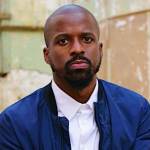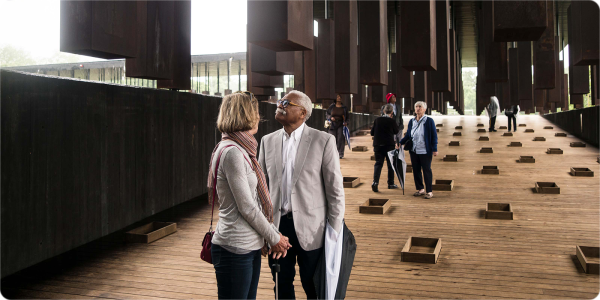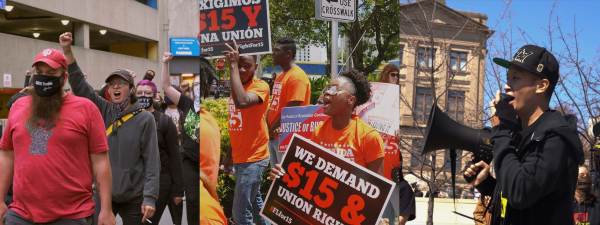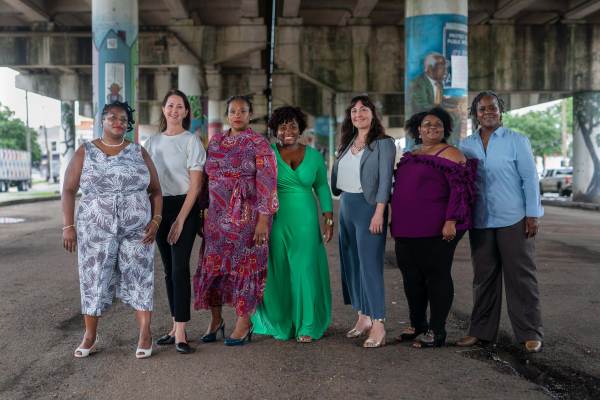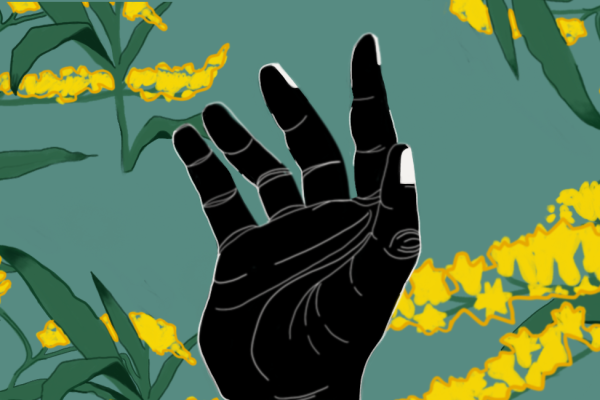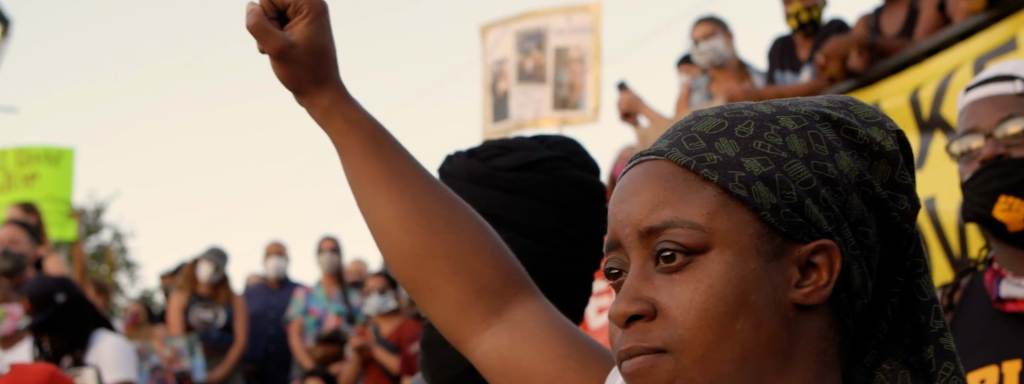
Two filmmakers head South to find out.
It happens in the 54th minute, a face-off. On one side, a white man stands in a New Orleans street shouting a string of provocations—“Come on, boy! Let’s f*cking go!”—into the face of a Black man, on the other side. The Black man peers back, his chin raised slightly, his hat casting a shadow over his face. His mouth readies. The white man seethes and sweats. He is angry, like most of the others. The Black man repeats aloud, like most of the others: “I will not live in fear. I will not live in fear. I will not live in fear.” A statue of Robert E. Lee towers in the background, the brass arms of the Confederate general folded one over the other, watching it all.

This piece is part of our featured series, The Story of the South is the Story of America.
In the space between the two men—no more than six or seven inches—there are questions: how can two parties look at the same piece of history—a collection of Confederate monuments and the events that produced them—and see two radically different truths, where one side is pushed to provoke and the other pushes to live without fear? Is it possible to meet in the middle, between taking and being taken, to find what is true for America past, present and future? Those questions stand at the center of The Neutral Ground, a documentary produced by CJ Hunt and Darcy McKinnon, which chronicles the fight over four Confederate monuments in New Orleans and America’s refusal to acknowledge and reckon with its racist past.
The Battle of New Orleans
In the summer of 2015, a white supremacist murdered nine Black parishioners at Emanuel African Methodist Episcopal Church in an act of domestic terrorism in Charleston, South Carolina. The massacre prompted calls across the nation for elected officials to address the public presence of symbols associated with white nationalism and the Confederacy.
In New Orleans, the organizers now known as Take ‘Em Down NOLA were already in the streets, a public reminder of the generations of Black activists who had long been in opposition of the many confederate symbols built in the city’s “neutral grounds,” those grassy public spaces intended for all citizens. Hearing that call, Mayor Mitch Landrieu asked city council to remove four monuments commemorating Confederate generals P.G.T. Beauregard and Robert E. Lee, Confederate president Jefferson Davis, and an obelisk celebrating the Crescent City White League, a white supremacist militia who attempted to overthrow Louisiana’s bi-racial state government in 1874.
In December of 2015, the New Orleans city council voted 6-1 in favor of removing all four monuments, but the decision was slowed by a federal lawsuit, acts of vandalism and intimidation, and the inability of city workers to secure the equipment to execute the removals. The delay lasted 446 days, as the documentary meticulously tracks. The council vote stoked the curiosity of Hunt, a comedian and field producer for The Daily Show, and McKinnon, a documentary producer based in Louisiana. But it was the furor around the vote that turned an idea for a short, satirical Youtube video into a full-length feature—one that would take Hunt and McKinnon on a journey across the American South, from a Civil War reenactment near a Confederate cemetery to a harrowing memorial of the South’s largest slave revolt.
Accessibility Statement
- All videos produced by the Ford Foundation since 2020 include captions and downloadable transcripts. For videos where visuals require additional understanding, we offer audio-described versions.
- We are continuing to make videos produced prior to 2020 accessible.
- Videos from third-party sources (those not produced by the Ford Foundation) may not have captions, accessible transcripts, or audio descriptions.
- To improve accessibility beyond our site, we’ve created a free video accessibility WordPress plug-in.
“Is anyone making a documentary about this?” Hunt asks early in the film. It was an honest question wrapped in jabbing sarcasm, a defining characteristic of Hunt’s comedic approach. That tension—between serious and silly—frames most of Hunt’s commentary and serves as the narrative thread of The Neutral Ground, which uses New Orleans as a microcosm for many Americans’ absurd aversion to examining white supremacy’s impact on the Civil War, slavery, and US history.
Hunt, the film’s director, moved to New Orleans in 2007 from New England to teach middle school while pursuing a career in comedy. It was there where he met producer McKinnon, a social studies teacher with a growing portfolio of digital and documentary projects. The 2015 vote met where their lives and interests touched. It was ripe for McKinnon’s commitment to telling multi-dimensional, sometimes difficult, stories about the South, and it was bizarre enough for Hunt’s improv-meets-stand-up-meets-late-night style of comedy.
“I saw it as a way to use my satire chops to draw out some of the hypocrisy of these folks who believed moving a statue is the same as destroying history,” Hunt said.
“CJ brings this de Tocqueville, stranger-in-a-strange-land approach, that ‘What the hell’s going on here?’ perspective,” McKinnon said. “I work as a Southerner. I tend to push back, to make sure we’re doing this in a way that doesn’t feel flattening.”
The Neutral Ground is anything but flat. Hunt and McKinnon bend and blend their styles to create a narrative tension that at times stirs sobering silence and other times stokes uncomfortable laughter—but always teaches. “The Battle of New Orleans” does all three.
Before the face-off, there is a sequence showing the sea of people flooding the streets. Led by Take Em Down NOLA, the multi-racial, cross-generational supporters of the vote—those who want the monuments to come down—carry banners that read “Black Lives Matter” and “Justice for Action.” They clap and march. They chant “Take down Robert E. Lee and all the symbols of white supremacy!” Meanwhile, a rag-tag assemblage of avowed white nationalists—members of the KKK, the League of the South, and helmet-clad live streamers—lumber around the base of the Robert E. Lee monument. Some wear helmets and protective eyewear. Many wear shirts bearing the badges of white nationalist organizations. Most have American, Confederate, and League of the South flags. The sequence is cut by several shots of local law enforcement with stoic faces, standing ready. It is a serious matter. Mostly.
Accessibility Statement
- All videos produced by the Ford Foundation since 2020 include captions and downloadable transcripts. For videos where visuals require additional understanding, we offer audio-described versions.
- We are continuing to make videos produced prior to 2020 accessible.
- Videos from third-party sources (those not produced by the Ford Foundation) may not have captions, accessible transcripts, or audio descriptions.
- To improve accessibility beyond our site, we’ve created a free video accessibility WordPress plug-in.
“There seems to be a little bit of silliness right now,” McKinnon says surveying the scattered white nationalists near the Robert E. Lee monument. Some men stand as if they’re going to battle, holding their flags at sharp 45-degree angles. A man plays a flute in the distance. They are serious. Mostly. Others shout into their smartphones, trading banter with friends who couldn’t make the trip and cursing out their enemies like Antifa. For a second, the theatrics do all seem, as McKinnon suggested, silly.
“We needed to show that these people are dangerous,” Hunt said of the scene. “But we also needed to show how fragile their environment is. We need to make white supremacy strange. Its greatest ability is to camouflage itself and pretend that it is neutral and invisible. Anything funny in the film is either attempting to give us a breath, to make life a little bit more bearable so we’re not going crazy, or else it’s attempting to make white supremacy and its rhetorical devices and weird myths strange and not natural.”
“When you teach,” McKinnon adds, “if you’re good at it, you’re able to access tough subjects, especially history. And one way of doing that is through absurdity, satire and humor.”
The Neutral Ground does provoke laughter. It also invites thought and introspection. It is meticulously researched and sourced. It ably weaves archival material, bits of popular culture , and expert commentary with Hunt’s fresh narrative voice and McKinnon’s steady creative eye.
Camp Moore: Kentwood, Louisiana
By McKinnon’s and Hunt’s accounts, one of the most challenging scenes to execute was their visit to Camp Moore for a Civil War reenactment. Located in Kentwood, a town about 85 miles north of New Orleans, Camp Moore was once the largest Confederate training camp in Louisiana. According to its website, it is the only such camp that remains open. The grounds comprise more than six acres—the original site spanned several hundred acres—and includes a cemetery where about 400 soldiers are buried along with a museum with dozens of Confederate artifacts. It does what the architecture of the Confederacy does so well: it dresses up the invention of history as preservation. It claims to show when it actually tells.
Every year, Camp Moore hosts a reenactment of the Civil War. The theater plays out over two days and includes various military drills and a dramatized clash between individuals posing as Union soldiers and sympathizers cosplaying their Confederate brethren. All participants must dress the part, including CJ.
“I believe Darcy’s exact words were, ‘If you get in a Confederate uniform, this project is over,’” Hunt recalls with a laugh. “Darcy, am I quoting you properly?”
“When CJ first proposed getting in a Confederate uniform,” McKinnon explains, “I was like, this is just another late-night comedy bit. But, as it continued to become a reality, I tried to imagine. It was this question of what is this for, who is this for, what are we going to get out of it? That’s part of the path that CJ takes us on in the film. Why are we doing all of this? In the end, I was wrong because the scene is really pivotal.”
Accessibility Statement
- All videos produced by the Ford Foundation since 2020 include captions and downloadable transcripts. For videos where visuals require additional understanding, we offer audio-described versions.
- We are continuing to make videos produced prior to 2020 accessible.
- Videos from third-party sources (those not produced by the Ford Foundation) may not have captions, accessible transcripts, or audio descriptions.
- To improve accessibility beyond our site, we’ve created a free video accessibility WordPress plug-in.
The scenes from Camp Moore help Hunt and Mckinnon stage one of the central battles that plays out in The Neutral Ground, the battle between historical fact and the collection of myths and lies—known generally as the “Lost Cause”—that frames the Civil War as a conflict over the right of states to freely govern themselves. According to Lost Cause adherents like the white men seen at Camp Moore, enslaved people were cared for and only rarely mistreated, Confederate soldiers were brave and noble countrymen striving to maintain an innocent way of life, and the South has been unfairly vilified in official and vernacular histories of the war.
The Neutral Ground outlines these myths with specificity—and sound effects. When each idea is mentioned, usually to challenge documented historical record, it is accompanied by the unmistakable ding of a call bell. Hunt and McKinnon say that was one of their goals with the film: “to give folks tools or arrows in their quiver to be able to respond in situations where they are seeing lies presented.” Those dings “should be happening in the viewer’s head.”
One of the most striking scenes comes during one of Hunt’s conversations at Camp Moore. He is seated with several men, all Confederate sympathizers, around a fire. They are all dressed in their reenactment garb. Many of the men sip coffee. Hunt is eating a honey bun, looking intently over the top of his glasses as he holds court. One of the men asks Hunt what he expected before coming to Camp Moore, and Hunt, as he does with masterful precision throughout the film, answers in a way that makes the setup seem bizarre, humorous—and also terrifying.
Accessibility Statement
- All videos produced by the Ford Foundation since 2020 include captions and downloadable transcripts. For videos where visuals require additional understanding, we offer audio-described versions.
- We are continuing to make videos produced prior to 2020 accessible.
- Videos from third-party sources (those not produced by the Ford Foundation) may not have captions, accessible transcripts, or audio descriptions.
- To improve accessibility beyond our site, we’ve created a free video accessibility WordPress plug-in.
The Whitney: Edgard, Louisiana
Over the five years that it took to film The Neutral Ground, Hunt and McKinnon travel to several places across the American South. In addition to Louisiana, the two spent time in Virginia, both at the American Civil War Museum in Richmond and at the Unite the Right Rally in Charlottesville.
“It felt like losing a piece of yourself in a lot of those spaces,” Hunt remembered. “You can only be there so long before it becomes toxic.”
Then there were places like The Whitney Plantation Museum, located about 40 miles west of New Orleans in Edgard.
The Whitney is one of the most unique museums of its kind in the nation and, according to its website, the only museum of its kind in Louisiana. Its sole focus is to honor the enslaved people once made to live and work on the grounds.
In the film, Hunt takes in an exhibit of 63 ceramic heads memorializing the 1811 German Coast Uprising. He is joined by Dr. Ibrahima Seck, the museum’s Director of Research, who explains that the heads represent the women and men of St. Charles and St. John the Baptist parishes behind the largest slave revolt in the history of the US South. The heads sit atop steel rods of different heights, a haunting representation of the hundreds of men and women whose heads were cut off and displayed as a reminder of what happens to black rebels. Hunt is visibly moved.
“It felt revelatory to be in spaces like the Whitney,” Hunt explained. “I was able to feel something different, which was what this space means to Black people. I think what reckoning means to us is not that we are forced to see something we were not seeing before, but to see a place where we were erased.”
The Neutral Ground is not just a story about New Orleans and its monuments. It is not just a story about how the Lost Cause came to stifle the way generations of Americans remember the Civil War and chattel slavery, and their legacies. And though Hunt and McKinnon seamlessly tie New Orleans and the Lost Cause with more recent happenings in Charlottesville and across the country after the murder of George Floyd, it is not just a story this moment of reckoning that is, at least, challenging conventional thinking about the enduring impact of systemic racism on America. It is also a story about Black people, a story that says Black people were here too, that their lives matter too, that what they have said, done, and been made to experience should be included in the way we, as a nation, remember and tell our history.
The 54th Minute
“You cannot have a scene that is just the Klansmen,” said Hunt. “It needs to be about the Black person standing in their way as well, the person going, ‘I will not live in fear.’” In the 54th minute of the film, after the face-off, a Black woman activist—her name is Angela Kinlaw—is shown speaking into a megaphone, standing at the base of the Robert E. Lee monument, on “neutral ground,” the name New Orleanians have given to the grassy median separating the city’s major thoroughfares.
“It is very important,” Kinlaw says, “that we make the connection between symbols and systems.” It is a noble and necessary call, one that The Neutral Ground can help us answer.
B. Brian Foster, Ph.D, is a writer and Associate Professor of Sociology at the University of Virginia. His latest book, I Don’t Like the Blues: Race, Blues and the Backbeat of Black Life, explores the issues of race and place while looking at efforts to revitalize the Mississippi Delta and their impact on Black communities and Black culture. Foster has partnered with the Ford Foundation for the Summer of the South series, a collection of stories from across the American South on change-makers rewriting the narrative of the region and the country at large.
